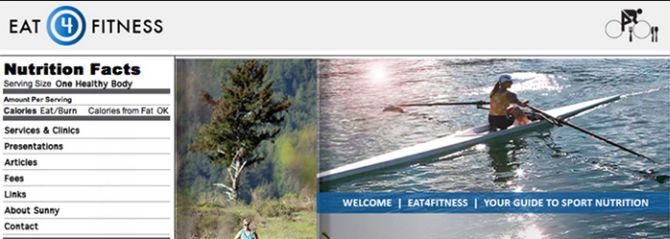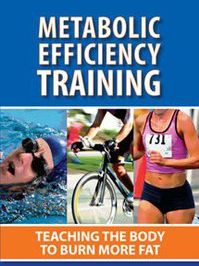

We had a fantastic seminar last night here at 101 Surf Sports courtesy of Tim Flemming, Sunny Blende, and Jen Fuller. It was really a huge change in perception. Did you know you could burn more fat by LOWERING the intesity of your workout? That's right - more fat burned and better performance.
For those of you who are totally lean, terrific fat-burners and never have any GI issues, stop reading this article. But for those of you who want to become, in the words of former fitness expert Covert Bailey, a “better-butter-burner”, read on this great article written by Sunny Blende.

Tim Flemming's Endurance Training Center http://www.enduranceptc.com
Sunny Blende's Eat 4 Fitness http://www.eat4fitness.com
Jen Fuller Fitness http://jenfullerfitness.com
This is not new science, but could be considered reemerging science. The Cross-Over Theory has been around since the 1930’s and in the 70’s and 80’s there was a large amount of research on aerobic training in relationship to fat burning. High mileage weeks and long-slow distance training was the norm. It wasn’t until later that quality became the standard in training over quantity. And with higher speeds (intervals) and constant “hammering” in training, the need for more immediate carbohydrates (aka immediate energy) brought about enormous developments in the sports nutrition product industry. And hence was born the carb-driven ultrarunner.
So, what’s wrong with carbs? I personally have been writing and encouraging athletes to include plenty of healthy carbs (whole grains, fruits and vegetables) in their training diets and recovery snacks for years. And nothing is wrong with carbs; we just may have lost sight of one of the most important parts of our nutritional training…the BASE training. Metabolic efficiency guru Bob Seebohar says, “What puzzles me as a coach and sport nutritionist is that athletes do not put in half as much effort planning their nutrition as they do constructing their training plan. Why is this important? For the simple reason that the best training plan is worthless if the nutrition plan fails.” Signs that your plan may not be working can be anything from GI distress (bloating, cramping, vomiting, etc.) to poor recovery and fatigue to out-and-out bonking. Ever suffered from any of these? Read on.
“Efficiency” is usually thought of as doing something well with the least amount of effort. One definition is “measure of a machine's energy effectiveness”. In ultrarunning nutrition, this boils down to (pun intended) being able to use MORE fat for energy while using LESS carbohydrate for energy. Why would we want to do this? Because at any given time, most trained runners are carrying about 1,500 – 2,000 calories of carbs and 80,000 (!) plus calories of fat! (Even the leanest runners.) Yes, we need carbohydrates to activate fat-burning enzymes to burn fat for energy, but think of it this way. One fat-burning enzyme burns a little fat; a bunch of fat-burning enzymes ignites a bonfire! Metabolic efficiency training builds a stockpile of fat-burning enzymes! Voila – the ultrarunner becomes much less reliant on consuming mass amounts of carbs during the race and has less chance of GI distress.
What is Metabolic Efficiency Training?
Sometimes it is easier explaining something by explaining what it is NOT. Metabolic Efficiency (ME) training is NOT a calorie-deficient diet and it is NOT a low-carbohydrate, Atkins-like diet. You do NOT need to count calories and you do NOT need any special foods or supplements. It is rather macronutrient partitioning – or manipulating your macronutrients (carbohydrates, fats and proteins) – AND exercise adaptation – or manipulating your exercise with correct aerobic training – that allows us to reap the benefits of increased fat utilization. To do this, we need to understand the crossover concept and learn our own crossover point. By effectively manipulating our aerobic training, we will increase mitochondrial capacity (the number of mitochondrial enzymes). By manipulating our diet to control blood sugar and our insulin response, we will be able to fuel with fewer calories during training and racing, therefore reducing our reliance on consuming simple sugars and increasing our utilization of our internal body fat. According to Bob Seebohar, “This will benefit any athlete in any sport of any duration both in the short and long-term.” Powerful, but the key is that you must manipulate both diet AND exercise together. And how “long” does it take to be more efficient at burning fat? Results can happen in as little as four weeks. Most protocols are 6-10 weeks. And you may want to start every season with a ME base when you experience the results.
The Crossover Concept
The crossover concept describes the relationship between exercise intensity and the use of fat and carbohydrate for energy during that exercise. Even though we burn a mix of
both carbohydrate and fat to fuel exercise up to maximal intensities, as the intensity of your exercise increases, your body prefers to use more carbohydrate for fuel. There are several biochemical mechanisms contributing to this increased use of carbohydrates that are beyond the scope of this article, but suffice it to say, these mechanisms decrease your fat oxidation or usage.
The crossover point - that intensity at which you start to burn more carbohydrate than fat - can be measured or defined in terms of speed, pace, watts (if cycling) or heart rate. This gives YOU, the ultrarunner, a pace or heart rate to train BELOW in order to increase your fat-oxidizing capacity (become a better fat burner). In the chart above, this crossover point occurs at 65% of VO2 max. By wearing a heart rate monitor during a ME test, you can accurately correlate YOUR crossover point to YOUR heart rate at that time. The goal of improving ME training is to “push the crossover point to the right”, or in other words, teach your body to use MORE fat (and therefore LESS carbs) at HIGHER intensities (higher heart rate). How do you teach your body to do this? Read on
Exercise Training – 30% Effect
ME training lets your body use fats and carbohydrates more efficiently. It manipulates cellular processes through aerobic training by increasing the size and number of mitochondria in your cells. So? Turns out if you also continue this aerobic exercise without a lot of available carbohydrates, your body adapts by increasing its workforce of enzymes that metabolize fat (that “stuff” around your middle…) for energy. Ahh! So that’s why we want an aerobic base! Many athletes ignore or “skip over” setting up an aerobic foundation because we don’t see the immediate benefits as we do in speed training. This is not to say that interval training, hill repeats, plyometrics, etc. do not produce positive changes – they do – they just don’t improve fat burning. You will be more metabolically efficient if you work on fat-burning (aerobic exercise) first, and then add in the other training regimes.
Of course, you can get around this by relying on a constant source of carbohydrates coming in to fuel your muscles (aid stations, carrying lots of calories, spiking your insulin by eating simple carbs…ALL the time!) but you will still be carrying around some of that fat on your body. Think of it this way…you know what goes through your mind when you see a runner carrying two full bottles of water during a race that they never drink…”Why carry all that weight around if they don’t use it?” Hmmm. Exactly.
So now after our ME test, we have our heart rate (or pace) to stay UNDER. Training at these lower intensities may be hard; when you are not metabolically efficient, it is easier to run at a higher HR - but it is VERY important to stay here to induce the cellular responses. This means a 10-mile run (or equivalent) may take you 2 1/2 hours because when you get to a hill, you will probably need to walk! Keep tabs on your heart rate.
Frequency is the key to ME training. You will need at least 6-7 hours per week in this zone for results, BUT it is critical to have MOST of your training in this zone. Most of you are exercising a lot more than 6-7 hours so this means that you can take one day a week off and run intervals or your regular group run (that goes above your ME heart rate), but your results will be delayed a bit. Remember, we are not talking about that long - you can see results in 4-10 weeks
Implementing the Nutrition Plan – 70% Effect
The nutrition component has by far the biggest effect on your fat-burning capacity and it is here that you MUST make changes to your diet to see results. The bottom line is that you remove or drastically reduce all grains from your diet. I didn’t say “all carbohydrates”, just grains. Your nutrition during this time will consist of lean protein, good fats and plenty of fruit, beans and vegetables. And your sports nutrition during your runs will change too. More about that later.
Eating too many refined carbohydrates or eating a large amount of carbohydrates at one time leads to an increase in usage of carbs for energy. This may be fine if you are already a “lean-machine”, but not if you are trying to get there. Processed or refined carbs (and even whole grains somewhat) cause an insulin response or spike. As insulin increases, fat breakdown and oxidation (burning) significantly decreases and eventually turns “off” (!) while this same insulin increase turns “up” the increase of carb oxidation. This causes the athlete to seek out more carbs and suddenly our diet becomes unbalanced and we become carb-driven. According to Bob Seebohar, “Controlling blood sugar through proper food selection is the key nutrition take-home message. Research proves that eating lean protein and fiber (think fruits and vegetables) together has a blood sugar stabilizing effect as well as being very successful in weight loss strategies.”
Remember, this is not a low-carb diet; it is a balanced diet. That means your meals will look different than the usual bagels, oatmeal and pasta. Breakfast may be black beans, spinach and eggs (or egg whites) micro waved to resemble an omelet, with some feta cheese or salsa on top. Or it may be yogurt with lots of berries and nuts added in. Lunch and/or dinner may be a huge salad with steak, salmon or tofu on top. Or it may be a lean piece of meat with lots of vegetables and some fruit and a small bit of cheese for dessert. If you cannot go cold turkey on grains, then add a small bit of quinoa or brown rice to your dinner. Snacks can be cut-up veggies with a yogurt-based dip. Soups, chili, stew, lettuce wraps – be creative!
What about during your workout? If we can’t use refined carbohydrates - sports drinks, gels, bars and pretty much everything we normally eat – what can we consume? Answer: water and electrolytes. Yikes…what about “one gram of carb per minute…240 calories an hour”…will I bonk? Will I die? No…you will lose fat. Your fat. Why? Because you are NOT going at a high intensity, remember? You are not going through your carb stores; you are fat burning by staying under your crossover point! The only reason you would bonk is if you are going too fast – or you run out of (your) fat J If you are running over two hours or so, you can add some non-grain based carbohydrate such as fruit, dried fruit, Lara bars or Justin’s nut butters.
Okay, now you are finished with your run...hurry to make that “30-minute window” for refueling. Not necessary. What? You did not deplete your carb stores…you only made a dent in your fat stores. So rehydrate and have a balanced snack or meal.
Where to Get Tested and Why Be Tested
Is it possible to predict an athlete’s metabolic crossover point without a formal lab metabolic test? It may be possible, but not advisable if you can possibly afford to have it professionally measured. Phil Maffetone uses his “180 Formula”; he takes an athletes chronological age subtracted from 180 and then adjusts it according the athletes current fitness and health by using four categories that add 0-10 beats. This may be close, but it probably won’t give that critical point that shows when you make that switch from burning more carbs than fat and it won’t tell you the calorie expenditure you are using.
But from one simple sub-maximal metabolic test, you can find out how many calories you are burning at different intensities (paces) AND how many of those calories are coming from fat and how many from carbs. You have a visual as to where you need to keep your pace for fat burning! And in addition to making it easier for you to become metabolically efficient, there are other positive benefits from becoming so. Decreasing your body-fat, lowering your triglyceride level, controlling insulin levels and bettering your blood lipid profile among them.
The actual test consists of using a metabolic cart and usually a treadmill, but a bicycle can be used. After fasting for about four hours, and after a through warm-up, you will be fitted with a mouthpiece, nose clip and headgear to capture your breathing. The test itself may take between 30-60 minutes but is NOT a maximal test. You will almost certainly start out walking and every 5 minutes the speed of the treadmill will be increased (about one-half minute per mile) until you have reached your crossover point and a bit longer to make sure. In the back of Bob Seebohar’s book, Metabolic Efficiency Training, he lists Metabolic Testing Centers. But the list is definitely not complete, so do some research. Many gyms are beginning to have this equipment; just be sure the person administering the test understands the protocol to be used. A very cost-effective way to be tested is to go to a college or university that has an Exercise Physiology Department. Grad students are always looking for guinea pigs, I mean runners, for research projects.
If you change your diet (70% effect) and if you definitely train at a low intensity (maybe lower than you need to, just to make sure you are not above your crossover point), you will get some results. But to maximize leaning-down in the shortest time frame, get the test.
Metabolic efficiency training can help you stabilize your blood sugars, give you steady energy, lose body fat and allow you to exercise faster/stronger at a lower heart rate. All great results. So think about incorporating ME training into your base training. All you really need to start you ME training once you get the test, is your running shoes, a heart rate monitor and your body fat J
LINKS to Trail Runner Nation Podcasts: Metabolic Efficiency Training, Carb-Burning versus Fat-Burning
http://trailrunnernation.com/2014/01/sunny-blende-carb-burning-vs-fat-burning/
References and Recommended Readings
Achten, J., Jeukendrup, AE. Optimizing fat oxidation through exercise and diet. Nutrition, 20(716-27). 2004.
Bailey, C. The New Fit or Fat, Mariner Books, Revised Edition 1991.
Coyle, EF, Jeudendrup, AE, Oseto, MC, Hodgkinson, BJ and Zderic, TW. Low-fat diet alters intramuscular substrates and reduces lipolysis and fat oxidation during exercise. Am J Physio Endocrinol Metab 280:E147, 2005.
Fleming, T. Endurance Performance Training Center, Mill Valley, CA, enduranceptc.com/services/elab
Fuller, J., Jen Fuller Fitness, Sausalito, CA, http://jenfullerfitness.com
Maffetone, P. The Big Book of Endurance Training and Racing. Skyhorse Publishing Inc., 2010.
Schulman, D. Fuel on Fat For the Long Run. Marathon and Beyond. Sept/Oct. 2002.
Seebohar, B. Metabolic Efficiency Training: Teaching the Body to Burn More Fat.
Self-published. Fuel4mance, LLC. 2009.
Seebohar, B. Nutrition Periodization for Athletes: Taking Traditional Sports Nutrition to the Next Level (2nd ed.). Boulder, CO. Bull Publishing. 2011.

